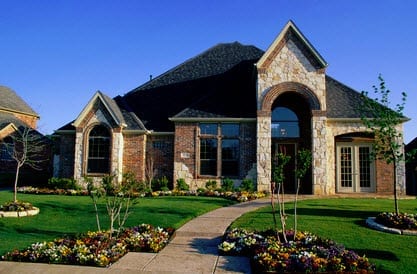The Federal Reserve puts the median cost of homeowners’ insurance at $744 per year, but insurance costs can range from as low as $300 per year to as much as $1,000 per year. Your home’s condition, geography and weather all influence costs. While you can’t do much about certain home hazards, such as a floodplain location or tornado zone, you can tackle other hazards that cause a higher premium. These four issues represent potential homeowners’ insurance credits that you can earn with just a little bit of work and upfront expense.
Update Wiring
Old homes contain old wiring that’s a fire hazard. As FEMA (the Federal Emergency Management Association) notes, 280 people are killed a year in electrical fires in the home. Most of these fires are caused by overloaded circuits, incorrect wiring and overused extension cords. If you live in an old house, you are going to pay a higher home insurance premium to cover the greater risk of electrical fire. Spending money to update the wiring in your old house can decrease those rates. Old wiring may even prevent you from obtaining homeowners’ insurance. Updating that wiring saves an average of 10 percent, Bankrate reports.
Remove the Pool (and other home hazards)
If you have a swimming pool in your yard, that outdoor luxury will require a premium on your homeowners’ insurance. Insurers see swimming pools as a risk because of the danger of drowning. Other property risk factors affecting a premium include a backyard trampoline, a backyard guest home, a treehouse, a gun, and an aggressive dog breed.
Watch Out
Homeowner’s insurers reward gated communities and members of homeowners’ associations because they’re less vulnerable to crime. These groups help homeowners stay on the lookout through community watch programs and gated entries. Even if you aren’t a member of the homeowners’ association, but you live in a community that has one, you benefit. Expect to see a 5 to 10 percent deduction on your homeowners’ insurance if you join an HOA and a 5 to 20 percent deduction for dwelling in a gated community, Bankrate explains. If there are no HOA’s near you, acquire other security measures for protecting your home. For example, you might install home security systems at LifeShield or organize a neighborhood watch program. Then see if you can obtain a discount for these measures.
Perform Home Renovations
Take advantage of a homeowners’ insurance deduction through safety renovations, such as a bathroom upgrade or roof repair. Check with your insurer if you’re already planning a renovation. A few minor tweaks to your remodeling plan could provide a 25 percent savings off your insurance.
Paula Porter
Paula was a project manager for a large home builder before retiring three years ago. She started writing at the suggestion of her daughter.
